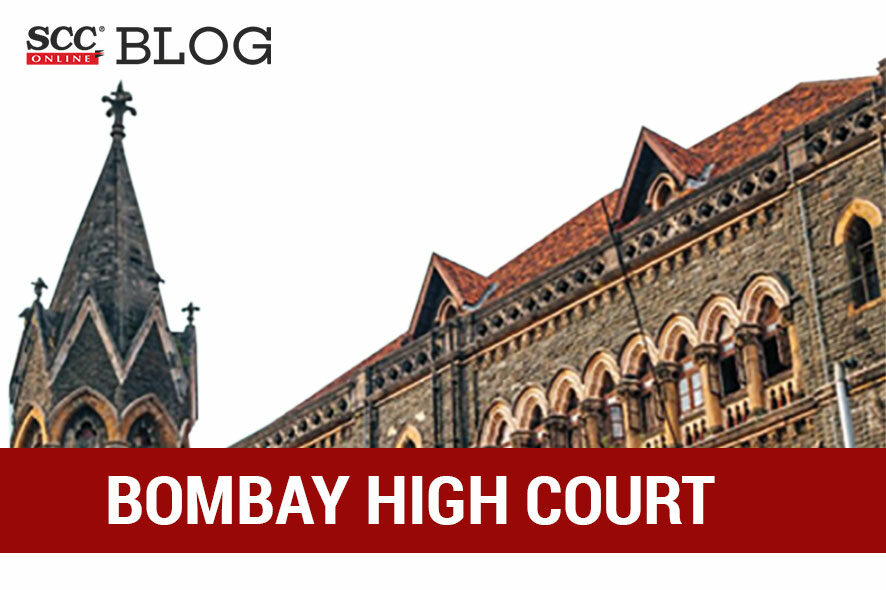Bombay High Court: In a petition filed by Macleods Pharmaceuticals Limited (petitioner) challenging the order passed by the Intellectual Property Appellate Board (respondent 2) (‘IPAB’) directing deletion of registered trademark ‘OFLOMAC’ registered by Sun Pharmaceuticals (respondent 4) for medicinal and pharmaceutical preparations falling in class-5 under the provisions of Section 57 of the Trade Marks Act, 1999, a division bench of SV Gangapurwala, ACJ., and Madhav J Jamdar, J., held that there is no patent error in the impugned decision and is in the interest of the general public as the mark concerns medicinal / pharmaceutical product. It is because confusion in the case of a non-medicinal or a non-pharmaceutical product may only cause economic loss to the person, but on the other hand, confusion in terms of medicinal or pharmaceutical products may have a disastrous effect on health.
The petitioner is a pharmaceutical company incorporated under the provisions of the Companies Act, 1956. It is the claim of Respondent 4 that it had applied for registration of trademark “OFRAMAX” on 30-08-1989 and registration was granted on 13-05-1994 in Class-5 i.e., “pharmaceutical products for human and veterinary use”. However, the petitioner filed the trademark application on 28-01-1999 regarding the mark “OFLOMAC” in said Class-5 and was granted registration for the same. Thereafter, respondent 4 filed a rectification application seeking cancellation/ removal of the said ‘OFLOMAC’ trademark registration of the Petitioner, which was thereby allowed and the order has been impugned in the present petition.
The main issue under consideration is whether the impugned trademark of the petitioner is of such a nature as to deceive the public or cause confusion with respect to the trademark of respondent 4 as envisaged under Section 9(2)(a) and Section 11(1)(b) of Trade Mark Act, 1999 Act?
The Court noted that the principles to determine the question of confusing similarity in the case of trademarks used in respect of medicinal products are as follows:
(a) When a particular medicinal or a pharmaceutical product is involved as the impugned trade mark which may deceive the public or cause a confusion with respect to another trademark, it is the Court’s primary duty to take utmost care to prevent any such possibility of confusion in the use of trademarks.
(b) Confusion in the case of a non-medicinal or a non-pharmaceutical product may only cause economic loss to the person, but on the other hand, confusion in terms of medicinal or a pharmaceutical product may have a disastrous effect on health. Hence, it is proper to require a lesser quantum of proof of confusing similarity for such products.
(c) The Court may not speculate as to whether there is a probability of confusion between the marks. The mere existence of the slightest probability of confusion in the case of medicinal product marks requires that the use of such marks be restrained.
(d) While arriving at a conclusion with respect to the similarity and confusion between medicinal products, the same should be examined from the point of view of an ordinary common man of average intelligence instead of that of a specialized medicinal practitioner. Courts must decide the same from the viewpoint of a man with average intelligence considering multiple factors such as the first impression of the mark, salient features of both the products, nature of the commodity, overall similarity, and the possibility of the same creating confusion amongst the public at large.
(e) The Court’s primary duty is towards the public and the register’s purity towards the public and the register’s purity. The duty of the Court must always be to protect the public irrespective of what hardship or inconvenience it may cause to a particular party whose trade mark is likely to deceive or cause confusion.
(f) The following rules of comparison can be culled out from various pronouncement of Court from time to time. (i) Meticulous comparison is not the correct way. (ii) Mark must be compared as whole. (iii) First impression. (iv) Prima facie view is not conclusive. (v) Structural resemblance. (vi) Similarity in idea to be considered.
(g) The main object of maintaining trade mark register is that the public should know whose goods they are buying. It is therefore essential that the register should not contain the trade mark which is identical by which purchaser may likely be deceived by thinking that they are buying the goods of a particular company/industry whereas he is buying the goods of another company/industry.
Placing reliance on Cadila Healthcare Ltd. v. Cadila Pharmaceuticals, (2001) 5 SCC 73, the Court further noted that the conclusions recorded by the IPAB are proper and legal and recorded by applying the established principles to the same. It is a settled legal position that when a particular medicinal or pharmaceutical product is involved in the impugned trade mark which may deceive the public or cause confusion with respect to another trademark, it is the Court’s primary duty to take utmost care to prevent any such possibility of confusion in the use of trademarks. The Court may not speculate as to whether there is a probability of confusion between the marks.
Thus, the Court held that the impugned trademark of the Petitioner is of such a nature to deceive the public or cause confusion with respect to the trademark of the Respondent 4 as envisaged under Section 9(2)(a) and Section 11(1)(b) of the said 1999 Act.
[Macleods Pharmaceuticals Limited v Union of India, 2023 SCC OnLine Bom 408, decided on 15-02-2023]
Advocates who appeared in this case:
Mr. Alankar Kirpekar a/w Ms. Archana Sahadeva, Mr. Rajas Panandikar, Mr. Shekhar Bhagat i/by MAG Legal for the Petitioner;
Mr. Rajesh G. Singh a/w Ms. Carina Xavier for Respondent 1 and 3 – Union of India;
Mr. Virag Tulzapurkar, Senior Counsel a/w Mr. Hiren Kamod, Mr. Anees Patel, Ms. Aishwarya Ambardekar i/by M/s Aishwarya Ambardekar Inttle for Respondent 4.







